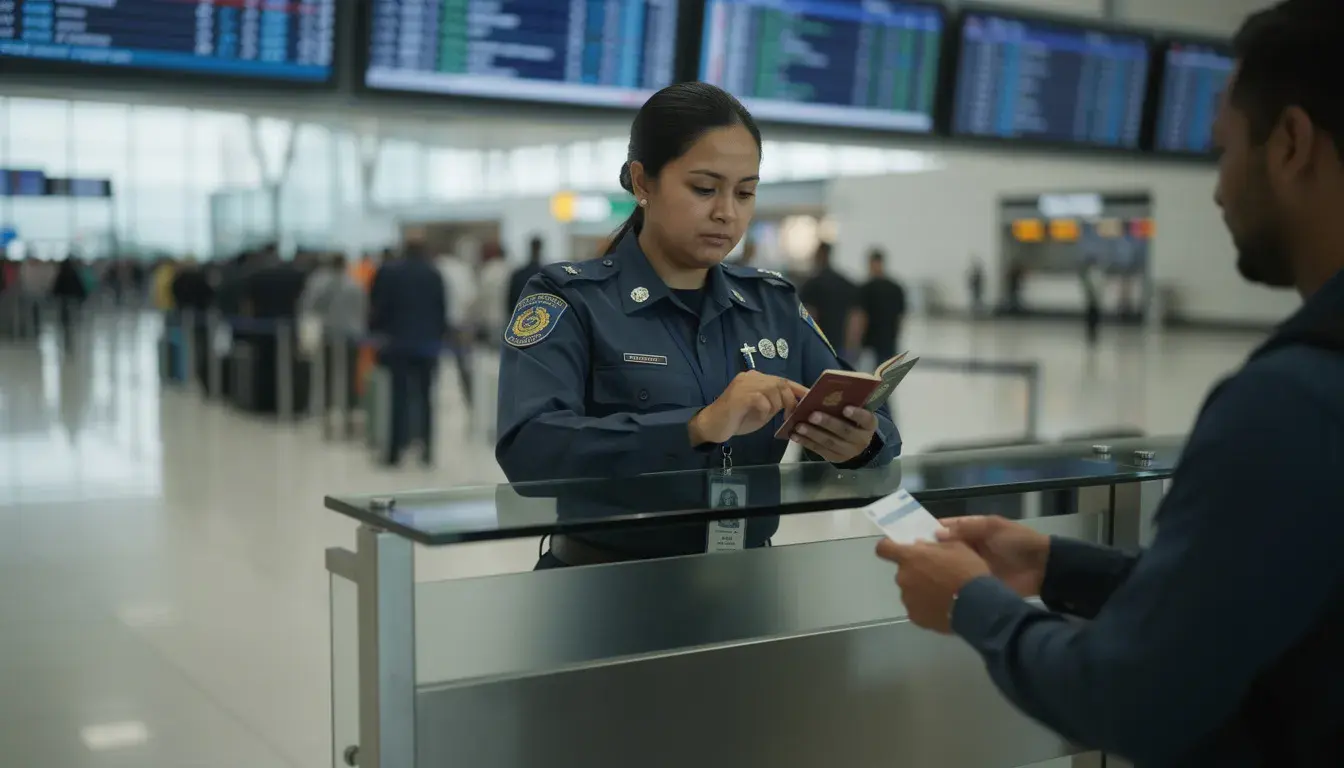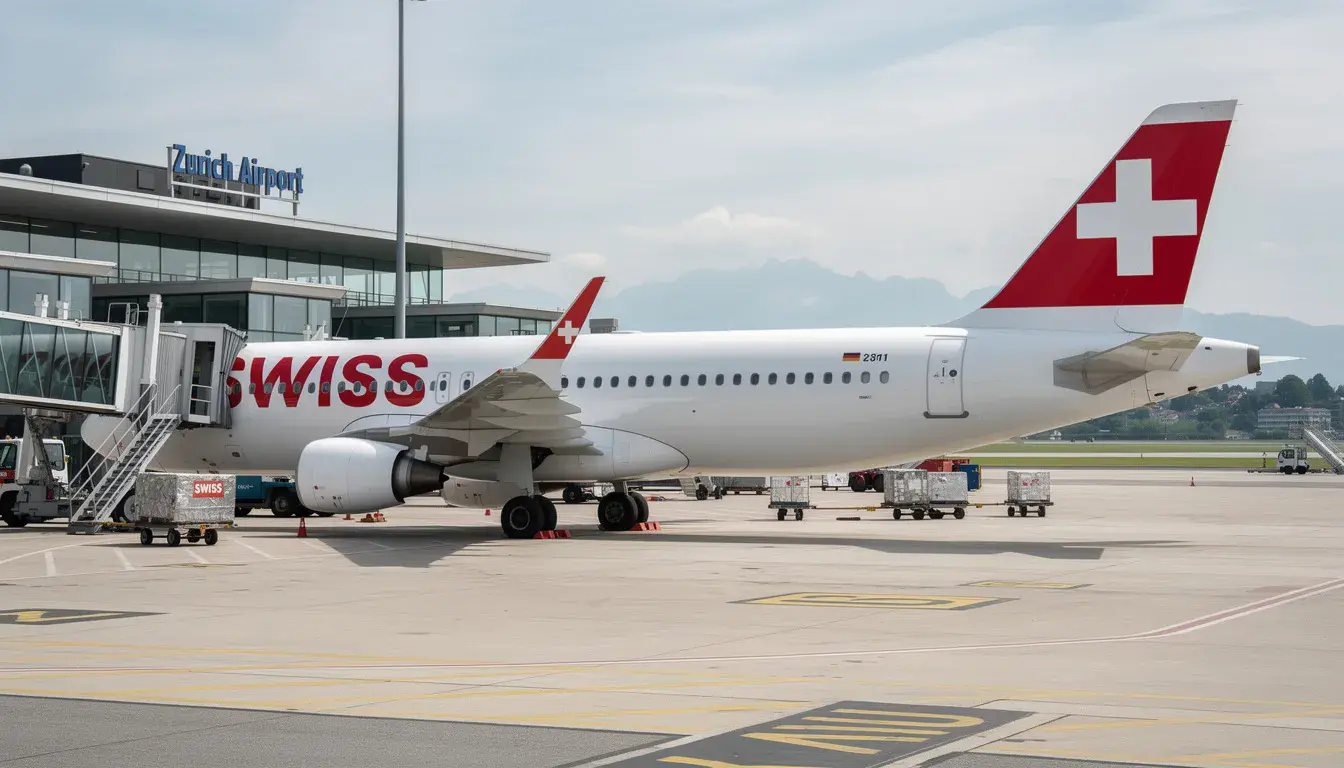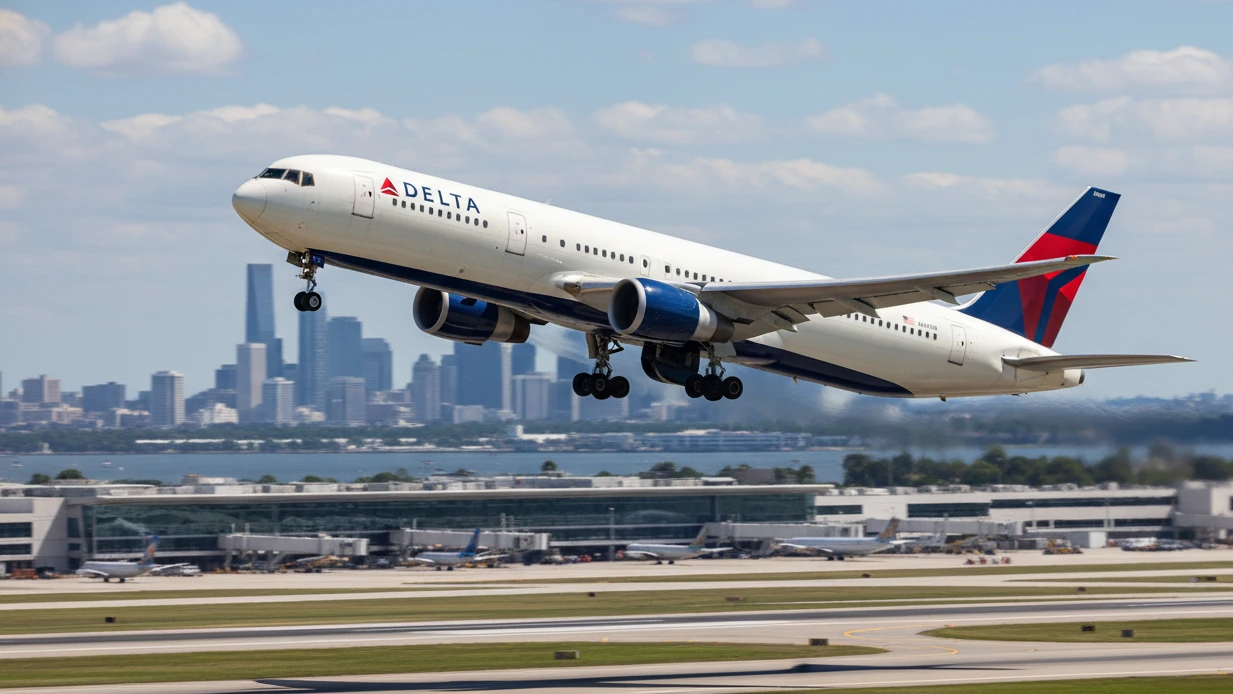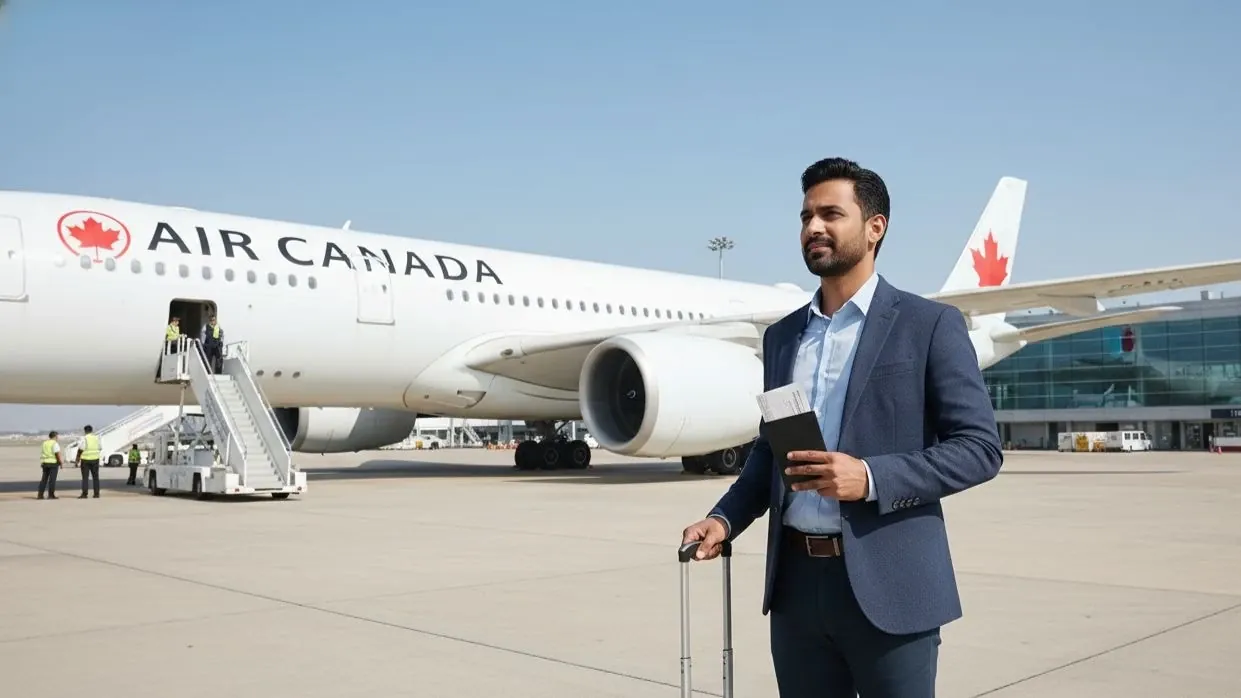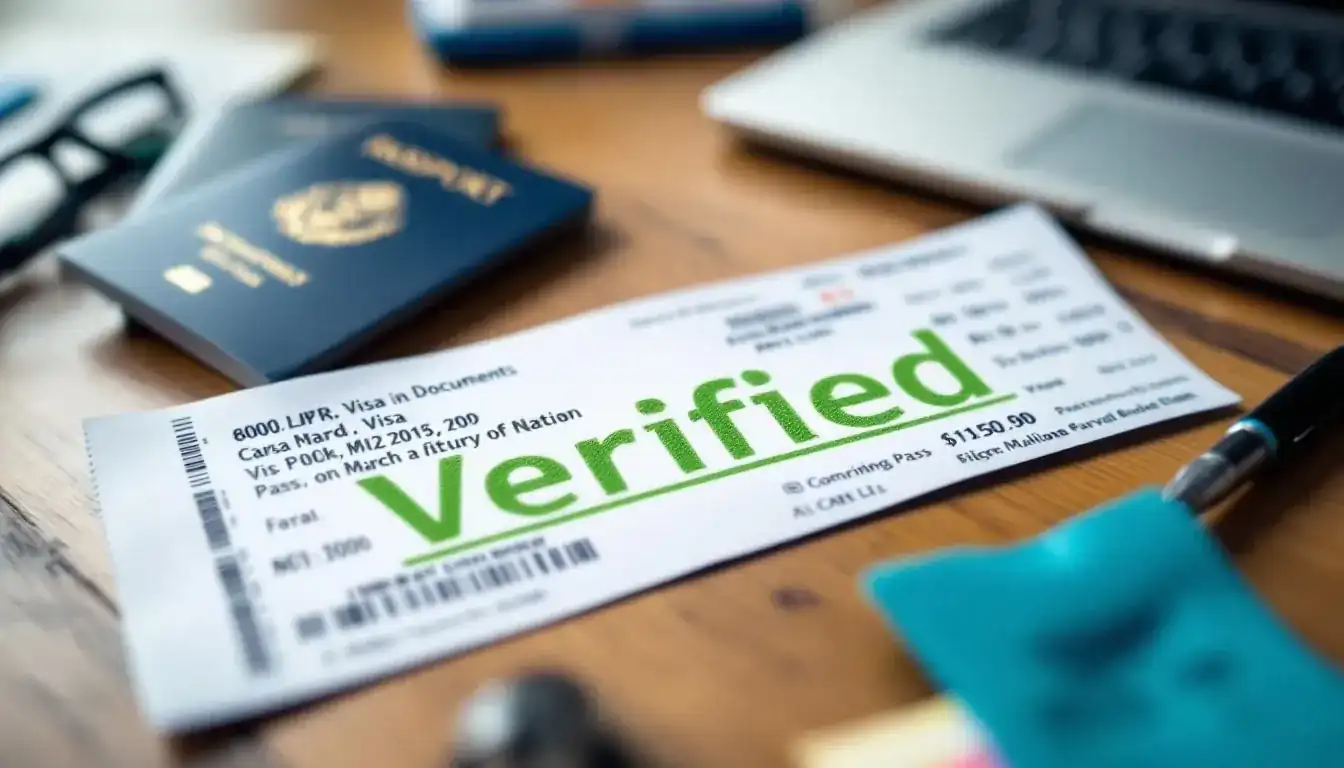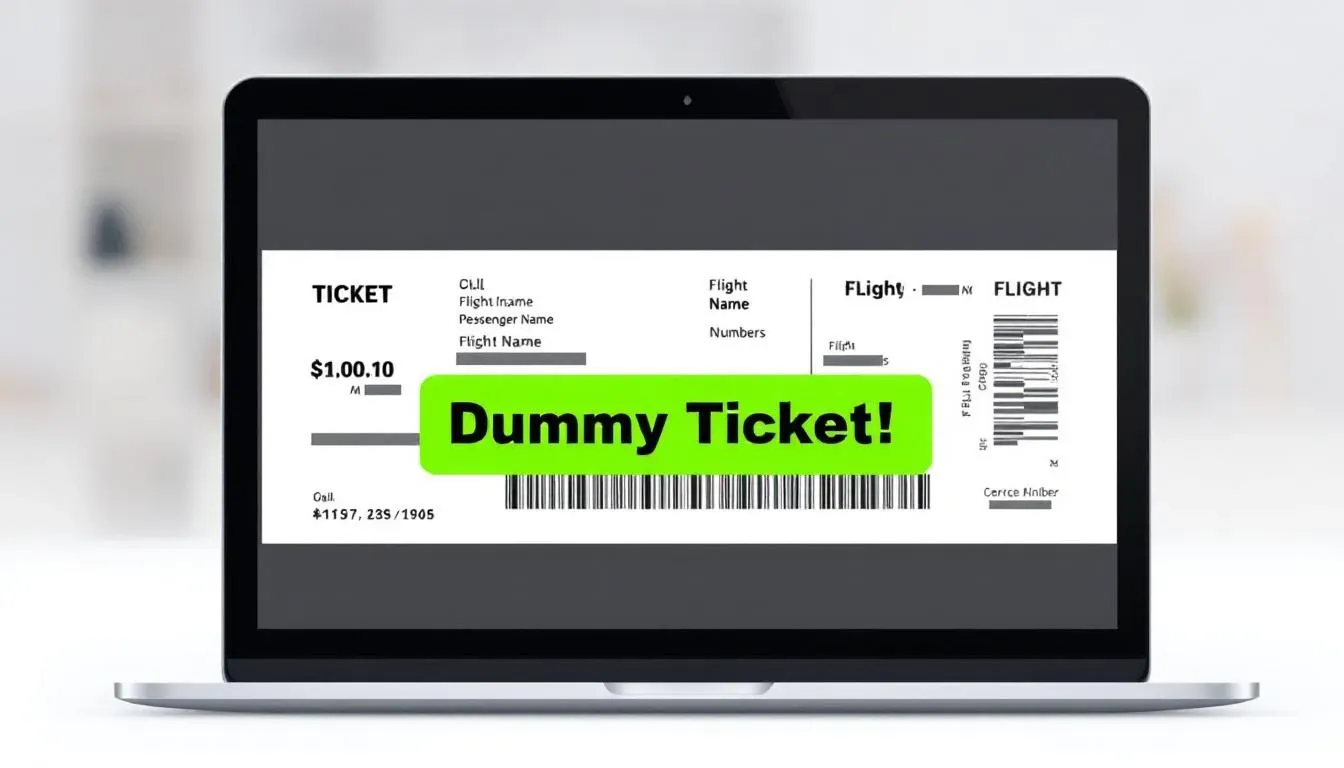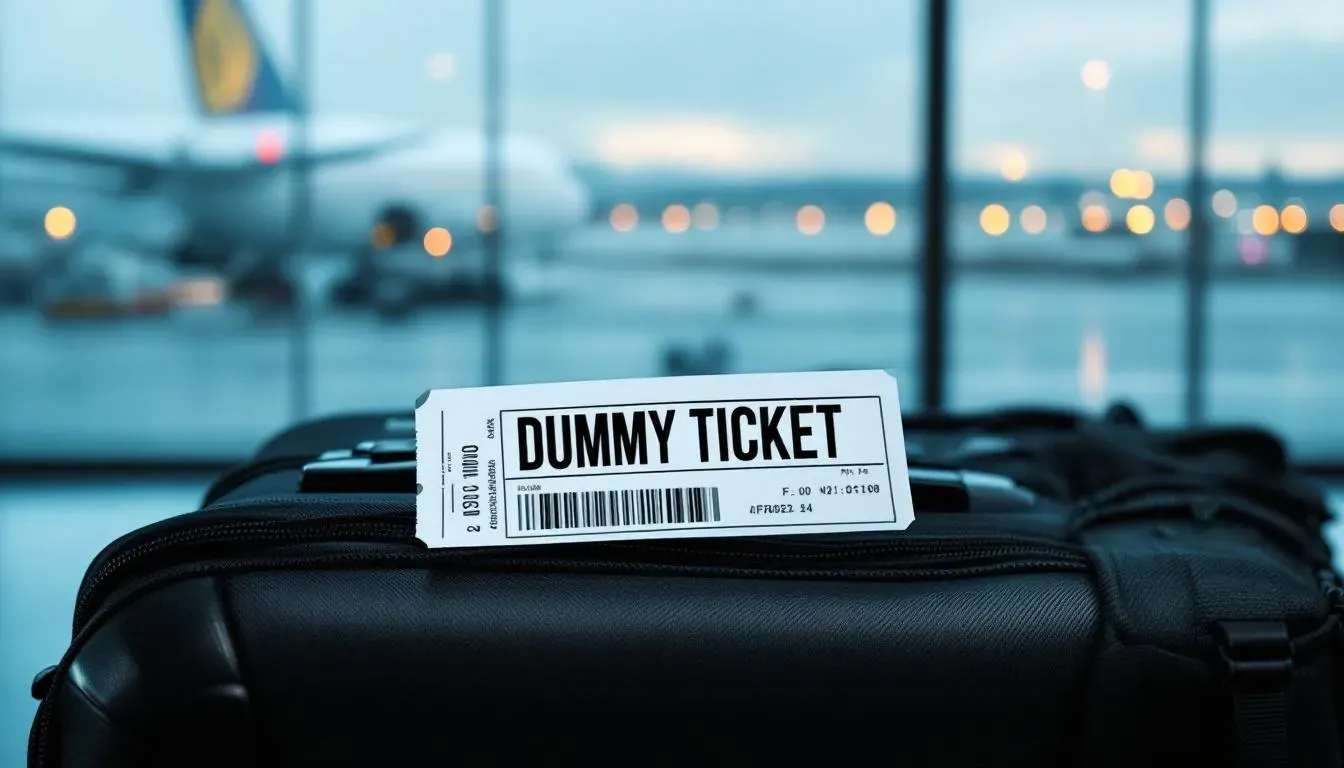Schengen Type C Visa Guide: Do You Really Need a Flight Ticket?
Booked your Schengen appointment and now every friend has a different rule about tickets? One says buy a return today. Another says a simple reservation works. Fares change. Appointments move. Your plan keeps breathing. We get it. For Indian travelers, securing a dummy ticket early can provide the flexible proof you need without committing funds prematurely.
In this guide, we cut through the noise for Indian applicants. You will see when a paid ticket is actually useful and when a reservation is enough. We explain the wording you see on consulate checklists and how officers read your itinerary against hotels, insurance, and funds. For more detailed visa processes, explore our FAQ or dive into expert tips on our blogs.
flight ticket for Schengen Type C visa is one of the most useful documents travelers prepare when organizing international trips. While most countries do not ask you to buy a fully paid ticket upfront, they do expect a verifiable proof of travel intent that clearly shows your entry and exit plan. This helps demonstrate that you will follow your schedule and return on time.
Using a professionally issued and verifiable flight ticket for Schengen Type C visa is the safest and most convenient way to satisfy this requirement without financial risk, especially for visa applications and immigration preparations.
Last updated: November 2025 — verified against the latest traveler documentation practices and global consular guidelines.
Table of Contents
We also map the Type C basics, the right consulate to choose, and the full process from slot to stamps. By the end, you will know exactly what flight proof to show and when to commit. Learn about our team's background in the About Us section. Secure your Schengen slot today with dummy ticket booking.
Do You Really Need A Paid Ticket For Schengen Visa Applicants? (Including Dummy Ticket Options)

You hear “confirmed ticket” and think full payment. Consulates often mean something else. Let’s decode the wording so you can choose the safest option for your situation in India. Running late on documents? Book a dummy ticket in minutes and stay compliant.
Straight Answer For Indian Applicants
For most Schengen Type C files, consulates look for a flight reservation or itinerary that shows your intended entry, exit, and internal logic. They do not usually require a fully paid, non-refundable ticket at the application stage. If a specific consulate asks for a paid ticket, follow that checklist. Otherwise, a credible, verifiable reservation is acceptable when it matches your hotels, insurance, and funds.
Why this matters. Appointments shift. Fares move. Buying early can trap your money. A reservation keeps your plan flexible while still proving your route. In fact, many Indian applicants use a dummy ticket as this reservation to ensure verifiability without financial risk.
Three Phrases, Three Different Expectations
You will see three common terms on checklists. They are not identical.
- Flight Reservation or Itinerary. Proof of sectors and dates. Shows how you plan to enter and leave. Payment is not implied.
- Proof Of Onward Travel. Evidence that you will exit the Schengen Area. This can be a return sector or an onward flight to a non-Schengen country.
- Round-Trip Booking. A complete loop in your plan. It points to both inbound and outbound sectors. It does not always mean fully ticketed.
Read the exact wording on your consulate’s page. Match your document to that wording. Do not over-supply. Do not under-supply. For official guidance, refer to SchengenVisaInfo.com.
How Officers Judge What You Submit
Officers check for credibility and internal consistency. They compare your itinerary with your hotel bookings, travel insurance dates, purpose of trip, and funds.
Ask yourself:
- Do my flight dates match check-in and check-out?
- Does my insurance cover the full stay plus a buffer?
- Does the route align with my “main destination” logic?
- Are connections and transit rules realistic?
If the answers are yes, your flight proof is doing its job. A dummy ticket often excels here due to its customizable dates and PNR verification.
When Paying Upfront Makes Sense
Sometimes a paid ticket helps. It can reduce back-and-forth when your plans are fixed and your dates are near. It can also help if you faced a previous refusal and want to remove doubt.
Balance that against risk:
- Non-refundable fares can be costly to change.
- Even “flexible” tickets may carry reissue fees or fare differences.
- Rescheduled appointments are common in India. Your ticket might stop fitting your new slot.
A smart path is to hold a verifiable reservation through the application stage. Convert to a paid ticket after biometrics or when decision timing is predictable. This approach minimizes exposure while maintaining compliance.
Online Submissions Vs Counter Checks In India
Many Indian applicants submit online or through VFS. Online portals accept PDFs that clearly show the sectors and dates. At counters, staff may scan for a verifiable PNR or a reservation that looks credible. Keep printouts handy. Make sure the name order matches your passport. Use the same route on your form, your hotels, and your insurance schedule.
If your reservation has a short validity window, refresh it in time. Update the PDF if the consulate or VFS invites you to upload an updated copy. Dummy tickets are ideal for this refresh process, as they allow unlimited changes.
Consistency Beats Fancy Tickets
A neat, coherent file wins. Officers do not award extra points for the most expensive ticket. They want a plan that makes sense.
Focus on:
- Identical personal details across documents.
- Stable dates across flights, hotels, and insurance.
- A route that matches your stated main destination.
- Funds that match the duration you claim.
If one detail changes, adjust the linked documents together. Do not leave mismatches. This holistic alignment is key to approval, regardless of whether you use a dummy ticket or full booking.
Tiny Wording Changes Across Countries
France, Italy, Germany, Spain, and others use slightly different phrasing. Do not copy a friend’s checklist. Use the checklist of the consulate you will apply to. Check it again the week you submit. Requirements can be updated. If the page asks for a “flight booking,” a reservation usually fits that term. If it explicitly says “paid ticket,” then plan for a purchase or a flexible fare.
For instance, the French consulate often accepts reservations, while stricter interpretations may appear in peak seasons. Always verify per country to avoid surprises.
Avoid These Red Flags
These problems slow files in India. All are easy to avoid.
- Dates that do not line up across tickets, hotels, and insurance.
- Unrealistic connections that ignore airport change times.
- No clear return or onward sector.
- A main destination on paper that does not match your night count.
- Insurance that expires before your exit.
- Name order errors that do not match the passport.
Run a final five-minute check before you print or upload. Catching one mismatch can save a week. Incorporating a dummy ticket early helps prevent these issues by allowing quick adjustments.
A Reality Check On Timing And The Indian Market
In peak months, appointments and processing move like a queue at a festival. Buying a non-refundable ticket too early can be painful. Fares can jump. Sales can vanish. Your office leave can shift. Your university or client can adjust dates.
Work with a rolling plan:
- Build a realistic itinerary.
- Create a reservation that covers the plan.
- Book hotels that allow date tweaks or provide reservation-style proofs aligned to your flight sectors.
- Set your insurance to the exact window you show on flights and hotels.
- If the slot date changes, refresh the reservation and align the linked documents.
- Commit to a paid ticket only when your timeline is firm.
You avoid sunk costs. Your file stays credible. Your plan remains agile. That is how Indian applicants keep control of both risk and budget while satisfying what consulates actually expect. Dummy tickets fit perfectly into this agile strategy.
Pick Your Flight Proof Like A Pro: Buy, Flex, Or Reserve
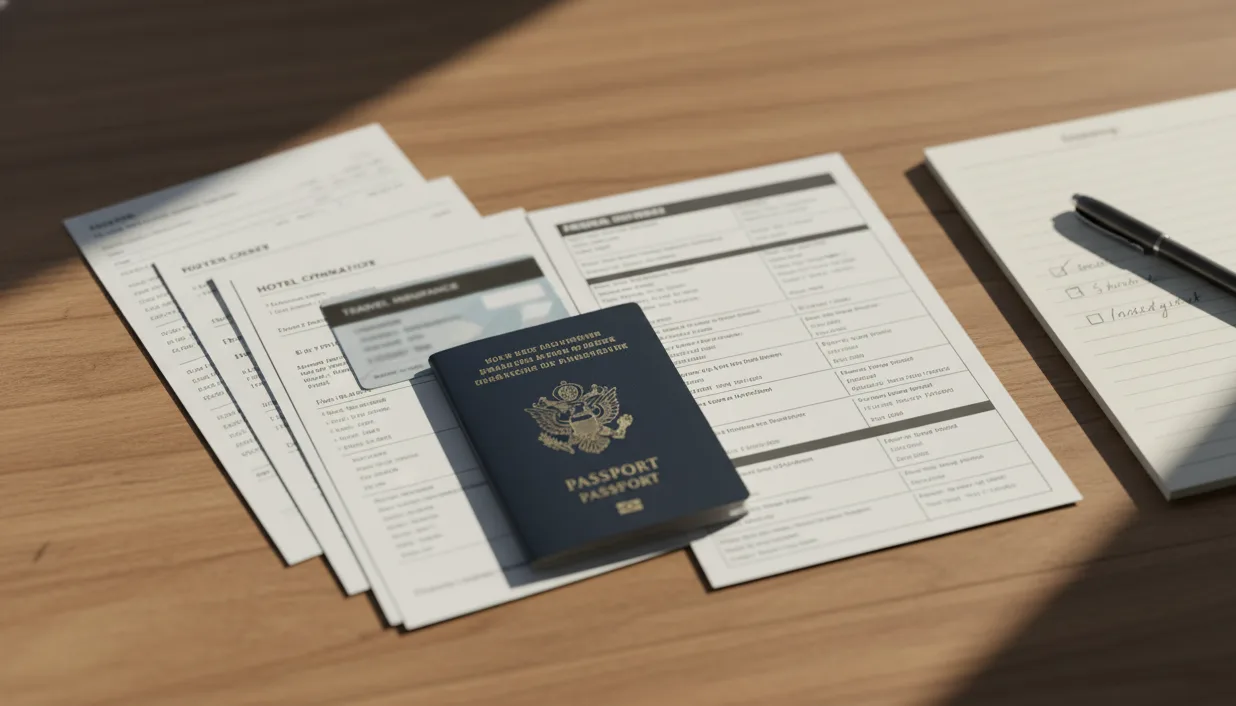
Before you spend a rupee, decide how much certainty you really have. Your appointment date, leave approvals, and campus or client schedules decide the smartest path. Then pick the ticket approach that fits your risk tolerance. Rescheduled appointment? Refresh dates anytime with our dummy ticket booking. 👉 Order your dummy ticket today for seamless compliance.
When A Fully Paid Ticket Is The Straight Road
A paid ticket is simple. You buy it. You print it. You move on.
Good for you if:
- Your appointment is this week, and your dates are fixed.
- You have a prior refusal and want to reduce back-and-forth.
- You found a rare sale that still works with your slot.
- Your company or university controls the dates tightly.
Watch the trade-offs:
- Cash gets locked.
- Changes can trigger fare differences and reissue fees.
- Airline schedule tweaks can force rerouting.
- If the appointment shifts, your ticket may stop matching your documents.
Tip for India: on many domestic pay cards, refunds return as credit in days or weeks. Plan cash flow accordingly. For those with fixed plans, this option provides the strongest proof, but assess risks first.
The Middle Path: Flexible Or Refundable Fares
Flexible tickets buy you breathing room without throwing money away.
Why travelers choose this route:
- You can rebook if VFS moves your slot.
- Some fares permit a free date change within the same cabin.
- Refunds are easier than with deep-discount tickets.
But read the fine print:
- “Flexible” is not always fully flexible.
- You may pay the fare difference even if the change fee is waived.
- A few Indian issuers take time to post refunds back to the card.
Best use cases:
- Business meetings that might slide a week.
- Students with registration windows that are not final.
- Family visitors waiting for school exam calendars.
This path balances cost and adaptability, ideal for semi-committed plans.
The Lightweight Option: A Temporary, Verifiable Reservation
A reservation proves intent without locking in a full fare. It shows sectors and dates and often includes a live PNR that staff can check.
Strengths:
- Low upfront cost.
- Easy to refresh if the appointment moves.
- Keeps every document in sync while you wait for a decision.
Limitations to manage:
- PNRs can expire in a few days or weeks.
- You must refresh on time and update the PDF.
- After approval, you still need to purchase a real ticket.
Works best when:
- You are still chasing slots.
- Travel dates depend on exam results or client sign-offs.
- You want to avoid fare traps during the peak European season.
Dummy tickets enhance this option with extended validity and easy updates.
Put Your Plan On A Grid: A Simple Risk Test
Answer four fast questions.
- Appointment certainty. Is your slot firm or still moving?
- Date rigidity. Can you shift your travel by a few days?
- Budget exposure. How much of the fare are you willing to risk?
- Change probability. Are there events that often slip in India, like campus reporting or tender meetings?
If you score high on uncertainty, choose a reservation first.
If you score moderate, consider a flexible fare.
If everything is set, a paid ticket may be the cleanest path. This test helps tailor your approach precisely.
Time It Right Around Your Appointment
Think in stages, not in a single jump.
- T minus 3 to 4 weeks: build your route, align hotels and insurance.
- T minus 2 weeks: generate a reservation that mirrors your form.
- T minus 3 to 5 days: if the PNR expires soon, refresh it.
- Biometrics day: carry printouts and the digital file.
- After submission, keep an eye on PNR validity. Refresh only if asked or if your tracker hints at an update window.
When the decision arrives or becomes imminent, switch to purchase. Match the same route or a very close variant. Timing like this prevents unnecessary expenses.
Handle Price Swings Without Panic
Fares in India rise and dip like a monsoon graph. Do not chase every drop.
- Track two or three target airlines for your sectors.
- Set a walk-away price.
- Switch from reservation to purchase only once your slot is firm up.
- If a real sale appears that matches your timing, grab it and freeze your plan.
Monitoring tools and alerts can simplify this, keeping you informed without obsession.
Verifiability Matters At The Counter
Front-desk teams often glance at a PNR. That quick check builds trust.
- Keep the name order identical to the passport format.
- Ensure sectors match hotel cities and insurance dates.
- If your PNR is close to expiry, refresh before biometrics.
- Save both the PDF and the booking reference in your phone.
A quick option when you need a live, checkable reservation: you can get a verifiable flight booking with unlimited date changes at BookForVisa.com for $15 (≈₹1,300). Use it when you want compliance and flexibility before you commit.
Tailored Playbooks For Different Travelers
Students: admission letters and orientation dates can move. Start with a reservation. Shift to a flexible fare once your reporting window is final. This accommodates academic uncertainties common in India.
First-time tourists: if the route is simple and dates are fixed by office leave, a flexible fare reduces stress. If your slot is still floating, use a reservation until it settles. Beginners benefit from low-risk starts.
Family visitors: plan around school exams, weddings, or medical care. Reservations help you stay aligned with shifting family schedules. Coordinate with relatives for unified proofs.
Digital nomads and remote workers: open-jaw routes are common. Show a clean entry and exit with a reservation first. Buy the real tickets once accommodation and work plans are locked. Flexibility suits dynamic lifestyles.
The Decision Tree You Can Use Tomorrow
- Is your appointment or travel date uncertain? Start with a reservation.
- Are your dates mostly firm, but you want safety? Take a flexible fare.
- Are you flying soon with fixed plans and a good price? Buy the ticket now.
Keep every move tied to document consistency. Flights, hotels, insurance, and funds should tell the same story. When they do, your application feels solid, and you avoid paying for changes you never needed. This tree simplifies choices for busy applicants.
Schengen Type C At A Glance And Where Indians Should Apply
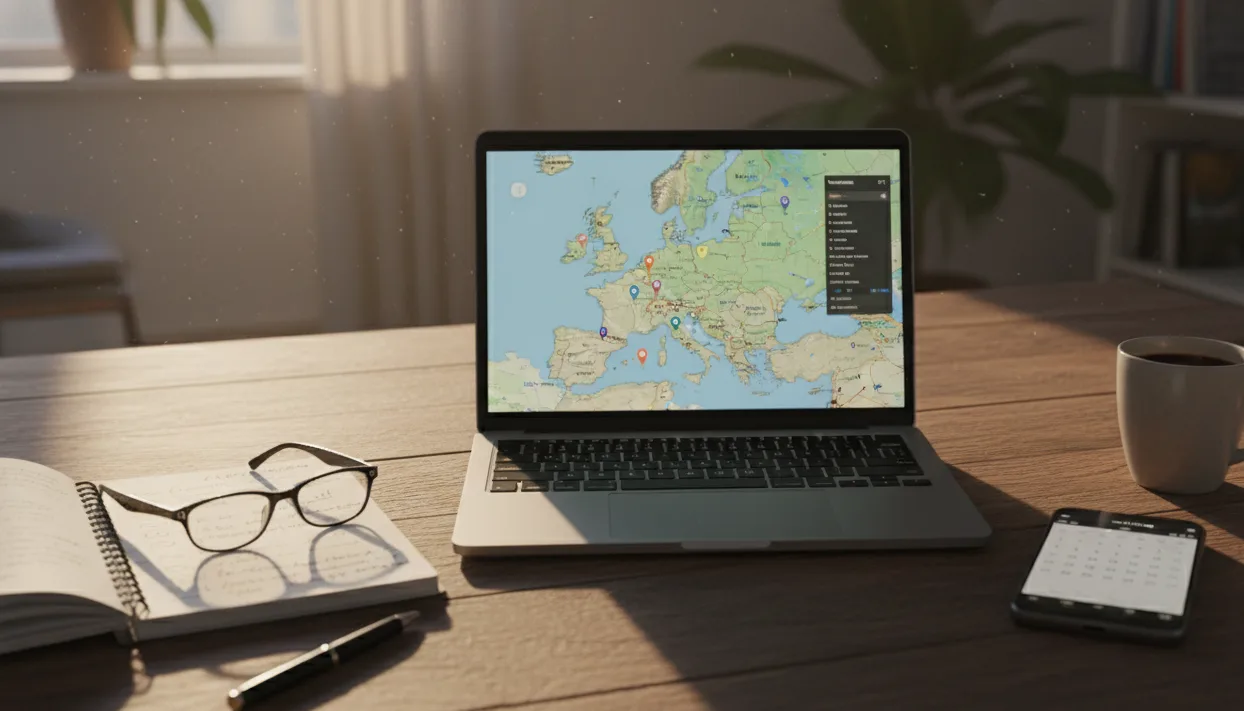
You want the big picture before you book anything. Here is the fast, Indian-focused view of how a Type C works, which consulate should take your file, and how your flight proof fits the rules across Europe. Planning a multi-city route? Book a dummy ticket that matches your itinerary.
What This Visa Actually Covers For Your Trip
A Type C Schengen short stay visa is built for tourism, family visits, meetings, cultural or educational training that lasts up to 90 days in any 180-day period. It is the classic type C Schengen visa that lets you enter the Schengen area for a limited time, not a work permit or long stay visa. Your visa appears as a visa sticker on your passport and shows the visa validity, number of entries, and territorial validity. It operates across most Schengen states that implement the Schengen agreement, plus linked microstates in the European territory of the European Union.
For clarity, some categories, like a pure work authorization, belong under a national visa or residence permit path. A separate “work” Schengen visa exists only as country-specific long-stay processes, not as a Type C. Focus on short-stay intents to align your application correctly.
Where To File: Make The Right Consulate Choice
Apply where your intended visit is longest. If nights are equal across countries, apply where you first land. That is the sole destination or main destination test. If France holds the longest stay, the French authorities are competent, typically through their consulate general, using external service providers in India. The same logic applies to other member states.
If your plan covers more than one destination or several separate visits, your flight proof must tell the same story as your hotels. The country with the longest stretch is your gatekeeper. You can still travel through the entire Schengen area once the visa is issued and is valid for that scope. Misapplying can lead to rejections, so double-check your itinerary.
Entry Types That Match Your Route
A single-entry visa is fine for a simple round-trip. If your plan touches the Schengen zone, then a non-Schengen country, and returns again, you need multiple entry rights. Many travelers ask about a multiple-entry visa because they may re-enter after a day trip or regional hop. The label on the sticker shows whether you hold a single-entry visa or the ability to visit the Schengen area multiple times.
Remember that the entry label is not the same as the duration. The sticker defines both how many entries and how long the visa validity window remains open. Select based on your full travel pattern.
Documents That Prove Your Case For Schengen Visa Without Drama
Every Schengen visa application from India should track the checklist of the destination country. At minimum, carry a valid travel document, flight plan, hotels, valid travel medical insurance with minimum cover required, proof of sufficient means, and purpose evidence such as an invitation letter. Students can add letters for educational events organised by schools and proof for postgraduate students if relevant. For business, include company letters. For family, include relationship proof.
For children, keep consent letters ready. For brand-new passports, add older travel proof if you have it. Your biometric data is captured if not already on file. Most Schengen visa applicants in India file through VFS, which forwards to the consular post. Some missions offer an accelerated visa procedure during events, but expect standard timelines. Comprehensive prep ensures smooth submission.
Transit, Stopovers, And Special Routing
If you only change planes and do not step outside international transit areas, you might need an airport transit visa depending on your passport category and the routing. That is different from an entry visa for stays. Check your sectors carefully, especially when crossing the external borders into Schengen. Tools like airline route planners help verify transit needs.
Who These Rules Apply To
The system covers non-EU nationals who are foreign nationals from third countries. If you are a third-country national who is already legally present in an EU state with a residence permit, you may not need a separate Schengen sticker for moves inside that state’s competence. Nationals from non-EU countries that appear on a visa waiver list can travel for a short time without a sticker, but Indian citizens do need to apply for a Schengen visa before travel. As an Indian applicant, full compliance is essential.
Fees, Validity, And Practical Numbers
Budget for the visa fee listed by each mission. Some categories can change pricing after decisions by the European Commission or guidance shaped by the European Parliament. Always check the current schedule before paying. Your sticker shows territorial validity. Some rare cases carry limited territorial validity, which confines travel to named countries rather than all Schengen member states. Factor these into your budget planning.
Proof That Matches Your Route
Your flight proof should reflect the same city sequence as your hotels and insurance. If your first entry is Paris and you plan to enter France and move through Belgium and the Netherlands, your documents should list that order. If an invitation letter drives the route, make sure dates match. The visa entitles travel within the permitted zone, but officers want coherence across papers. Dummy tickets make route matching effortless.
Border Control Reality
Holding a sticker does not guarantee admission. You still carry the basics at the airport. That means your itinerary, insurance, funds, and a valid travel document that matches the data on the sticker. Officers can check whether the travel document is genuine and whether your plan fits within the territory covered by the visa. Preparedness at borders reinforces your application strength.
Edge Notes For India-Focused Itineraries
- If your trip includes airport transit, confirm whether your nationality requires the specific transit category for named routes.
- If your aim is to study beyond 90 days, shift to a residence permit or national visa track.
- If your plan includes overseas territories or non-Schengen parts of French territory, check separate visa requirements because not all French regions in the world are under the same regime.
- If you have a valid Indian passport and hold status in the European Economic Area, rules differ; most readers here will not.
- For applicants with tight calendars, book early slots with external service providers and keep proofs aligned to avoid rework.
These notes highlight common pitfalls for Indian travelers, ensuring proactive planning.
Fit Check Before You File In India
Look at your whole visa application packet. The checklist should reflect Indian realities: reliable bank statements, company leave, student letters, and a clean route. Your forms must match flight sectors, night counts, and insurance dates. Bring originals and copies to the center. Keep your receipt after payment, then track progress until the decision.
When your plan is consistent and your destinations make sense, you reduce questions at the counter and move faster toward Europe without surprises. A final alignment review can be the difference between approval and queries.
Your End-To-End Playbook: From Plan To Stamp
Start with a plan that makes sense, then build every document around it. When your story is clear, officers move faster and you avoid avoidable questions at the counter. Need a verifiable PNR for VFS? Choose fast, reliable dummy ticket booking.
Map A Credible Route Before You Touch The Form
Sketch dates that work with leave, classes, or client schedules. List cities in the order you will actually visit. Check connection times and airport changes. Keep the trip length realistic for your budget and time off. Use mapping tools to visualize and validate your path.
Choose The Right Consulate And Lock Your Slot
Apply where you spend the most nights. If nights are equal, apply where you first land. Book a VFS or mission slot early in peak months. Do not double-book across countries. That creates noise and can slow you down. Early booking slots availability during high-demand periods.
Fill The Form So Every Detail Matches
Copy your route exactly into the application. Entry city, exit city, and night counts should mirror flights and hotels. Use the same passport name order everywhere. Avoid abbreviations that do not match your bookings. Precision here prevents form-related rejections.
Assemble Proofs In A Logical Order
Group documents so an officer can read your plan in five minutes.
- A flight reservation that reflects your real route
- Hotel proof for each night or a single, clear plan if you stay with family
- Insurance that covers the full stay plus a small buffer
- Bank statements with current balances and recent activity
- Employment or student letters and leave approvals
- Purpose letters or invitations, if relevant
- Previous travel proof, if you have it
Clip them set by set. Add a one-page summary of your route if you want to be extra clear. This organization streamlines review.
Biometrics And Interview: What Happens On The Day
Arrive early with originals and copies. Keep your route summary on top. Be ready to answer simple questions. Why these dates? Why this order of cities? How will you fund the trip? Short, straight answers help. Practice responses to build confidence.
Fees, Receipts, And Tracking Without Stress
Pay the fee listed for your category and keep the receipt with your file. Save the tracking number. Do not call daily. Check status at calm intervals. If the center requests an updated document, respond promptly and keep a copy of what you sent. Patient tracking yields better results.
Processing Times And Smart Timing Moves
In peak season, files take longer. Build buffer days around your planned travel. Avoid buying non-refundable services before making a decision. If you must pay for something early, choose options that allow changes without heavy penalties. Buffers account for seasonal delays in India.
Edge Case: Multi-Country Circuits
Complex routes are fine if they are coherent. Show the longest stay clearly. Line up hotels in the city in order. If you have a day trip outside the bloc, choose the correct entry type and make sure your flight plan shows the re-entry. Detailed itineraries support multi-stop plans.
Edge Case: One-Way And Open-Jaw Trips
Many travelers fly into one city and out of another. That works if your documents show both the entry sector and the exit sector. If you exit by land or sea, include proof for that leg. Keep the hotel plan consistent with the path you show. Open-jaw proofs require extra attention to onward travel.
Edge Case: Groups And Families
For families and tour parties, consistency is everything. Use the same dates, cities, and broad timing across all members. Cross-check that every passport name appears correctly on bookings. Carry copies of shared proofs, like invitations or insurance family policies. Group coordination simplifies collective applications.
Edge Case: Minors And School Documents
Bring birth certificates, consent letters from both parents or guardians, school letters, and custody documents if applicable. Align the child’s route to the adult they travel with. Officers look for clear guardianship and a sensible plan. Child-specific docs ensure family travel approvals.
If Your Reservation Expires Mid-Process
Reservations have validity windows. Refresh yours if it will expire before a decision. Keep sectors and dates consistent with the form and hotels. When you refresh, save the updated PDF and keep the older version for your records. If the center invites you to upload a new copy, do it promptly. Proactive refreshes maintain file integrity.
Changing Plans After Submission
Small timing shifts happen. If only the flight time changes within the same dates and cities, keep your file aligned and carry both versions to the counter if you are asked. If the main destination changes or dates move materially, inform the center using the channel they provide. Update hotels and insurance to match. Do not let one document drift away from the rest. Communication is key for post-submission adjustments.
After Visa Issuance: How Much Can You Change
Once the sticker is in your passport, you can usually adjust airlines and dates within the validity and conditions you received. Keep the trip purpose, main destination logic, and total length consistent with what was approved. If you received a specific entry type, do not plan a route that requires a different one. Post-approval flexibility allows real bookings without stress.
At The Border: What Officers May Ask
Carry your reservation or ticket, hotels, insurance, and proof of funds. Keep confirmations on your phone and a slim print set in your hand luggage. Answer questions simply. Where will you stay? How long will you remain? How will you pay? Clear, steady answers shorten the check. Digital backups enhance border readiness.
A Simple Pre-Submission Checklist For India
Run this quick audit the evening before your appointment.
- Names match the passport everywhere
- Dates align across flights, hotels, insurance, and the form
- Night counts add up correctly
- Entry type fits the route you show
- Bank statements are recent and readable
- Letters are on letterhead with contact details
- Photocopies and originals are ready in separate folders
When your file reads like a well-planned journey, you reduce friction at every step. Build the plan, keep documents consistent, and update quickly if anything shifts. That is how you move from appointment to approval with confidence. This checklist is a proven tool for Indian applicants.
Ready To Submit With Confidence
You do not need to gamble on flights to get your visa. You need a coherent plan that reads clearly. Pick the right proof strategy for your timeline, align every document, and keep a small buffer for changes.
We have walked through what consulates actually look for, how to choose between paid, flexible, or reservation tickets, and the exact steps from slot to stamp. You also know how to handle multi-country routes, open-jaw trips, groups, and minors without stress.
Keep the story consistent. Refresh reservations on time. Update hotels and insurance if anything shifts. Do this and your file feels complete, credible, and ready for a smooth decision. Ready to finalize your file? Book a dummy ticket and submit with confidence.
Frequently Asked Questions
To further support your Schengen application, here are answers to common queries from Indian travelers. These expand on key topics for clarity and confidence.
What If My Dummy Ticket Expires Before My Visa Decision?
If your dummy ticket's PNR is nearing expiry, simply refresh it through your provider. Ensure the new version matches your original itinerary exactly—same routes, dates, and passenger details. Upload the updated PDF to VFS if requested, and keep records of both versions. This process takes minutes and keeps your file current, avoiding any processing delays. Many applicants do this 2-3 times during waits, especially in peak seasons.
Can I Use A Dummy Ticket For Multiple Schengen Countries?
Yes, a dummy ticket works perfectly for multi-country itineraries as long as it shows logical entry, internal travel, and exit points. For example, if applying via France for a trip covering France, Italy, and Spain, your dummy ticket should reflect that sequence. Align it with hotel bookings and insurance for the full route. Consulates appreciate verifiable, consistent proofs like these, reducing scrutiny.
Is A Dummy Ticket Accepted By All Schengen Consulates?
Most Schengen consulates accept verifiable reservations, including dummy tickets, at the application stage. However, always cross-check your specific consulate's checklist—e.g., German missions may emphasize "confirmed bookings," which reservations fulfill. If in doubt, opt for one with a live PNR for on-spot verification. Over 90% of Indian approvals use such flexible proofs without issues.
How Do I Ensure My Dummy Ticket Matches My Insurance And Hotels?
Start by finalizing your itinerary first: list dates, cities, and nights. Generate the dummy ticket to mirror this exactly. Then, purchase insurance covering those dates plus 3-5 buffer days, and secure hotel confirmations for each segment. Use a spreadsheet to track alignments—it's a simple way to spot mismatches early. This step ensures your entire package tells a unified story.
What If VFS Rejects My Dummy Ticket At Submission?
Rejections are rare if the dummy ticket includes a verifiable PNR and clear details. If it happens, politely explain it's a reservation per guidelines, and offer to show the live booking reference. Most counters accept after a quick check. To prevent this, choose providers like DummyFlights.com that specialize in embassy-ready formats. Have a backup flexible fare ready if needed.
Can Families Use One Dummy Ticket For All Members?
Typically, each traveler needs their own booking reference, but group reservations can cover multiples under one PNR. For families, generate individual PDFs with shared details, ensuring names match passports. This saves time while maintaining compliance. Include family ties in your cover letter for context—officers view grouped applications favorably when consistent.
These FAQs address real concerns from our community, helping you navigate with ease. For more, visit our blogs.
What Travelers Are Saying
Related Guides
Why Travelers Trust BookForVisa.com
BookForVisa.com has been helping travelers since 2019, supporting over 50,000 visa applicants with reliable tools and guidance. Our 24/7 customer support ensures quick resolutions, while secure online payments deliver instant PDF bookings. As specialists in dummy ticket reservations, BookForVisa.com focuses exclusively on verifiable, embassy-compliant proofs backed by a registered business and dedicated team—no automated systems here.


